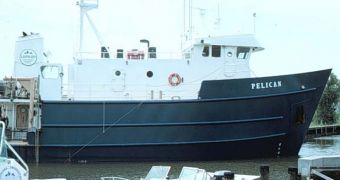Oceanographers have recently announced that they have discovered a large underwater plume in the Gulf of Mexico, in the immediate vicinity of the Deepwater Horizon accident. They say that the formation is not visible from the surface, and that it is most likely made up of oil. If future results confirm this finding, then it would mean that environmentalists' worst fears have realized. These plumes would not be visible from the surface, and they would also prove that the extent of the damage caused by the three ruptured wellheads is even larger than thought.
At this point, experts believe that as much as 5,000 gallons of crude oil are spilling into the waters of the Gulf every day. This has been going on for about a month, since the oil platform blew up on April 20. But some have argued for weeks now that the amount of crude being spilled into the waters is actually a lot higher. A group of experts believes that as much as 100,000 gallons may be spilling daily, and the new finding would seem to tip the balance towards those arguing for a far more extensive leak.
Ever since the scale of the devastation became visible, experts, officials and authorities have been focusing on keeping the oil slick away from shorelines, in order to protect delicate spawning grounds and marine reserves, But the new analysis, carried out by scientists aboard the research vessel Pelican, shows that most of the crude may instead be located under the surface of the sea, in underwater plumes that could make their way into the North Atlantic vortex. If this happens, then marine organisms along the US eastern seaboard, and especially Florida, would also be decimated.
In addition to preventing the flow of oxygen in the water, oil also promotes the development of specific types of microbe species, which feast on it, but also extract additional oxygen from the water. The dispersant authorities use to break up the oil slick fuel the microbes even further, and deplete oxygen reserves even further. Environmentalists now fear that the ecological downfall of the spill will be catastrophic. The R/V Pelican demonstrates that authorities should begin to focus their efforts on determining the true scale of the disaster, Nature News reports.
The Deepwater Horizon semi-submersible drilling rig, which operated only tens of miles south of the coasts of Louisiana, suffered a large explosion on April 20. Eleven crew members are assumed dead, and all rescue efforts aimed at finding them have long since been called off. On April 22, the rig sunk into the waters of the Gulf, in spite of the fact that emergency response ships were on-site, evacuating workers, and pouring water on the platform. With the collapse of the Horizon, the pipes that carried the oil from a depth of 5,000 feet (1,500 meters) broke.

 14 DAY TRIAL //
14 DAY TRIAL //